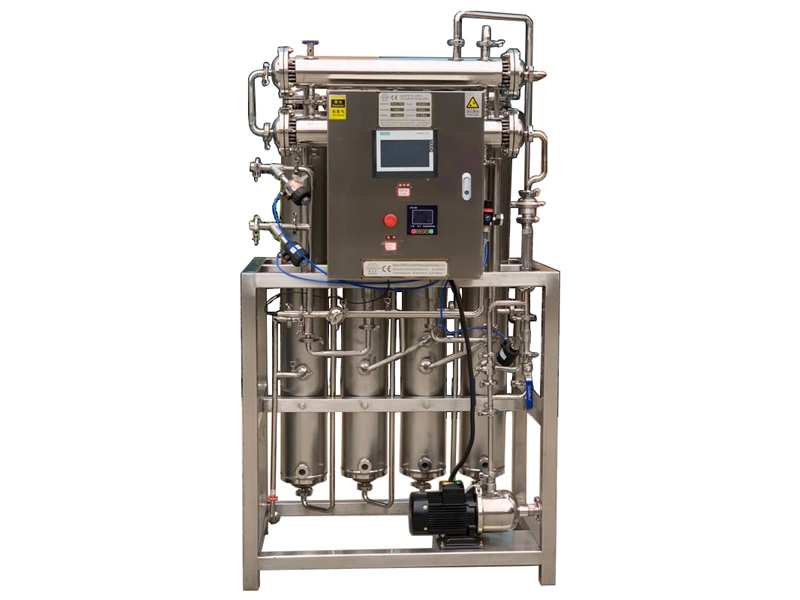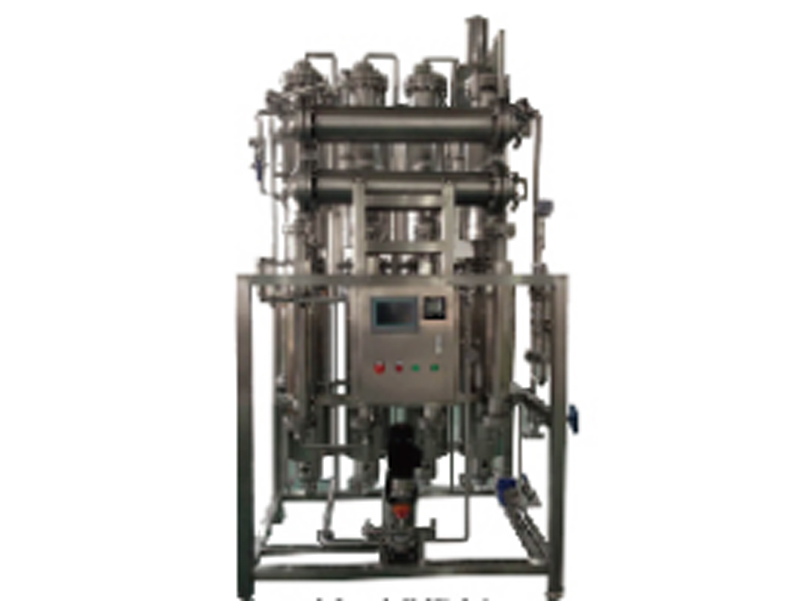A distiller is a machine that uses distillation to prepare pure water. It can be divided into single-distilled and multiple-distilled water. After one distillation, the non-volatile components of the water are removed from the container, and the volatile components enter the initial fraction of the distilled water, typically collecting only the middle portion, accounting for about 60%. To obtain purer water, an alkaline potassium permanganate solution can be added to remove organic matter and carbon dioxide during a single distillation, and a non-volatile acid can be added to make ammonia a non-volatile ammonium salt. Since glass contains a small amount of substances that can dissolve in water, quartz distillation vessels must be used for second or multiple distillations to obtain very pure water, and the resulting pure water should be stored in quartz or silver containers.

The working principle of a distiller: the source water is boiled and then allowed to evaporate and condense for recovery, which consumes a lot of heat energy and is expensive. Other substances that evaporate when heated in the source water used to make distilled water, such as phenols, benzene compounds, and even evaporable mercury, also condense into the distilled water as it is generated. To obtain pure or ultra-pure water, two or three distillations are required, as well as other purification methods.

Applications of a distiller: In daily life, the main function of distilled water in relation to machines and electrical appliances is that it is non-conductive, ensuring stable machine operation and extending the service life of electrical appliances. In the pharmaceutical industry, the low-permeability effect of distilled water is exploited. Distilled water is used to wash surgical wounds, allowing tumor cells that may remain on the wound to absorb water and swell, rupture, decay, lose activity, and avoid tumor growth on the wound. In school chemistry experiments, some require distilled water, which utilizes the properties of distilled water as a non-electrolyte, free of ions, or impurities. Specific analysis is required for specific problems to determine whether it is taking advantage of its non-conductive properties, low permeability effects, or lack of other ions and non-reactivity.
Features of a distiller: An alkaline potassium permanganate solution can be added to remove organic matter and carbon dioxide during a single distillation, and a non-volatile acid (sulfuric acid or phosphoric acid) can be added to make ammonia a non-volatile ammonium salt. Since glass contains a small amount of substances that can dissolve in water, quartz distillation vessels must be used for second or multiple distillations to obtain very pure water, and the resulting pure water should be stored in quartz or silver containers.
Post time: Aug-01-2023

